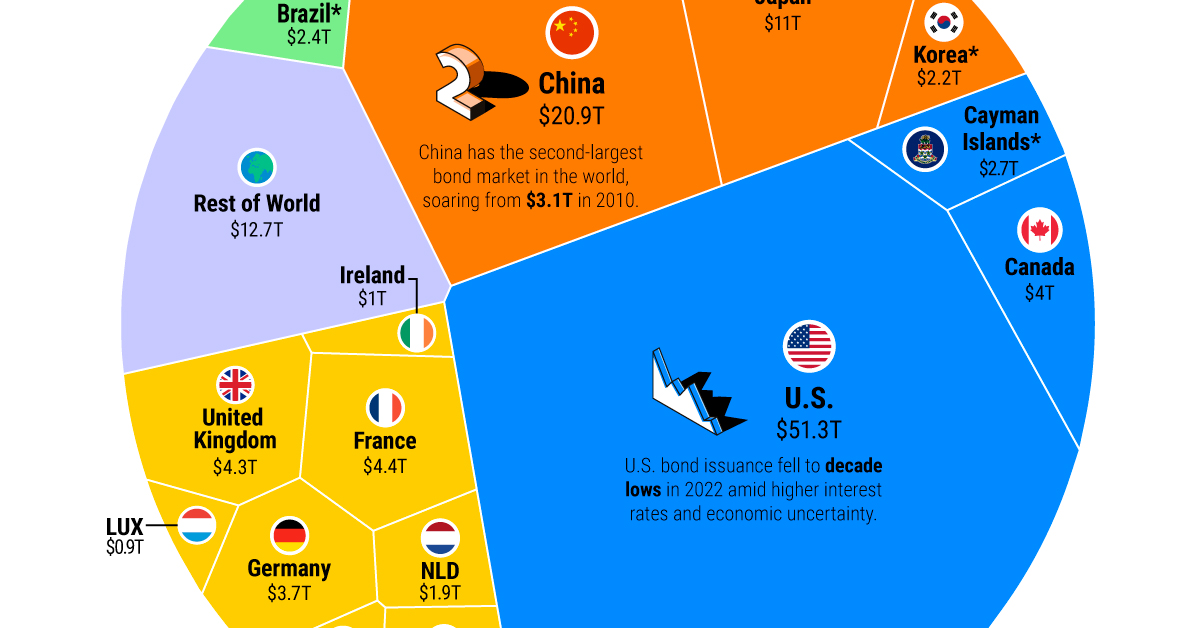

Finance
What Is Foreign Exchange Hedging
Published: January 15, 2024
"Learn how foreign exchange hedging can help you mitigate financial risks and protect your assets in the volatile world of finance."
(Many of the links in this article redirect to a specific reviewed product. Your purchase of these products through affiliate links helps to generate commission for LiveWell, at no extra cost. Learn more)
Table of Contents
Introduction
In today’s globalized economy, companies operating internationally are exposed to various risks, including fluctuations in foreign exchange rates. Foreign exchange rates can have a significant impact on a company’s profitability, making it crucial for businesses to manage and mitigate these risks.
Foreign exchange hedging is a strategy used by companies to protect themselves against adverse movements in foreign exchange rates. It involves taking measures to offset potential losses that may arise from currency fluctuations, thus minimizing the risk of financial losses. By implementing effective foreign exchange hedging strategies, companies can safeguard their cash flows, maintain stable profit margins, and improve their overall financial stability.
Foreign exchange hedging is especially important for companies that engage in international trade, have subsidiaries abroad, or rely on foreign investments. Without proper hedging measures in place, these organizations are vulnerable to volatile currency markets, which can lead to significant financial losses and operational disruptions.
This article will provide an overview of foreign exchange hedging, discussing the various methods and instruments used by companies to protect against currency risks. We will explore the benefits and potential drawbacks of implementing foreign exchange hedging strategies, as well as the factors to consider when deciding whether to hedge or not.
Whether you are a business owner, financial manager, or simply interested in understanding how companies manage currency risks, this article will provide you with valuable insights into the world of foreign exchange hedging.
Overview of Foreign Exchange Hedging
Foreign exchange hedging is a risk management strategy employed by businesses to mitigate the potential impact of currency fluctuations on their financial performance. It involves taking proactive measures to offset currency risks and protect against adverse movements in exchange rates.
The primary goal of foreign exchange hedging is to minimize the uncertainty and financial losses that may arise from fluctuations in currency values. By implementing effective hedging strategies, companies can stabilize their cash flows, protect profit margins, and ensure a more predictable financial outlook.
There are several reasons why companies choose to hedge their foreign exchange exposure. Firstly, hedging allows businesses to mitigate transactional risks associated with international trade. When conducting cross-border transactions, companies typically agree on a specific exchange rate for future payment. By hedging, they can lock in an exchange rate in advance, protecting themselves from unfavorable currency movements that could increase costs or reduce revenue.
Additionally, companies with international operations may face translation risks arising from the converting of foreign subsidiary earnings or assets into their reporting currency. Hedging such exposures can help eliminate or reduce the impact of currency fluctuations, providing greater stability in financial statements.
Furthermore, companies that engage in foreign direct investments may opt for hedging to minimize the risks associated with future cash flows from these investments. By hedging the currency risk, they can protect the expected returns and mitigate the impact of adverse exchange rate movements.
It is important to note that foreign exchange hedging is not without its complexities. Companies must carefully assess and evaluate their exposure to currency risks before implementing hedging strategies. This involves analyzing various factors such as the size and nature of the exposure, the time horizon, and the expected impact on cash flows and profitability.
Moreover, companies must consider the costs and benefits of different hedging instruments and techniques. Each method has its own advantages and limitations, and the choice of hedging instrument will vary based on the company’s risk profile, financial capabilities, and the specific requirements of the exposure being hedged.
Overall, foreign exchange hedging plays a vital role in reducing the uncertainty and potential financial impact of currency fluctuations on businesses. It allows companies to maintain stability in their operations, protect their bottom line, and navigate the challenges of operating in a global marketplace.
Methods of Foreign Exchange Hedging
There are various methods and instruments that companies can utilize to hedge their foreign exchange exposure. Each method offers different features and benefits, allowing businesses to tailor their hedging strategies to their specific needs and risk profiles.
Here are some commonly used methods of foreign exchange hedging:
- Forward Contracts: Forward contracts are one of the most popular and widely used methods of hedging currency risk. A forward contract is an agreement between two parties to exchange a specified amount of currency at a future date and at an agreed-upon exchange rate. By locking in the exchange rate in advance, companies can protect themselves from any adverse fluctuations in currency values. Forward contracts offer flexibility in terms of the contract size and duration, allowing companies to hedge both short-term and long-term currency exposures.
- Options Contracts: Options contracts provide the right, but not the obligation, to buy or sell a specified amount of currency at a predetermined price within a specific period. Companies can use options to hedge against potential currency movements while still allowing the opportunity to benefit from favorable exchange rate fluctuations. The two most common types of options used for hedging are call options (to protect against currency appreciation) and put options (to protect against currency depreciation).
- Currency Swaps: Currency swaps involve the exchange of a specified amount of one currency for another, with an agreement to reverse the exchange at a future date. This method is often used to hedge long-term currency exposures, such as debt obligations, by effectively converting the currency denominations. Currency swaps allow companies to benefit from comparative advantages in different markets, while also managing their currency risks.
- Futures Contracts: Futures contracts are similar to forward contracts, but they are standardized and traded on organized exchanges. These contracts obligate both parties to buy or sell a specified amount of currency at a predetermined price and future date. Futures contracts provide liquidity and transparency, making them suitable for companies looking to hedge their currency risks in highly regulated markets.
- Exchange-Traded Funds (ETFs): ETFs are investment funds that trade on stock exchanges and aim to replicate the performance of a specific currency or a basket of currencies. Companies can use ETFs to gain exposure to foreign currencies or to hedge their currency risks. By investing in ETFs that track the value of a particular currency, companies can mitigate exchange rate fluctuations.
It is essential for companies to carefully evaluate the advantages and limitations of each hedging method and select the most appropriate one based on their specific circumstances. Factors such as the size of the exposure, the time horizon, the level of flexibility required, and the company’s risk appetite should all be taken into consideration.
Ultimately, the goal of utilizing these hedging methods is to reduce uncertainty, protect cash flows, and maintain stability in financial performance, thereby allowing businesses to focus on their core operations and strategic objectives.
Forward Contracts
One of the most common methods of foreign exchange hedging is through the use of forward contracts. A forward contract is a customized agreement between two parties to exchange a specified amount of currency at a future date and at an agreed-upon exchange rate.
Forward contracts are typically used to hedge transactional currency exposures in international trade. When companies engage in cross-border transactions, they often face the risk of unfavorable currency movements between the time a contract is signed and the actual payment is made. By entering into a forward contract, businesses can lock in an exchange rate in advance, eliminating the uncertainty and potential losses resulting from adverse currency fluctuations.
The key features of forward contracts include:
- Customization: Unlike standardized currency futures contracts, forward contracts are flexible and can be tailor-made to meet the specific requirements of the hedging parties. The contract size, maturity date, and exchange rate can be negotiated and agreed upon between the two parties.
- Delivery and Settlement: Forward contracts involve the physical delivery of the underlying currency at the agreed-upon maturity date. However, in practice, many companies opt for cash settlement, where the net difference in the currency exchange rate is settled in cash without the actual exchange of currency.
- Duration: Forward contracts can have various durations, ranging from a few days to several years, depending on the hedging needs of the parties involved. This allows businesses to hedge short-term and long-term currency exposures effectively.
- Non-Standardized: Forward contracts are private agreements between two parties, meaning they are not traded on organized exchanges. As a result, they lack the transparency and liquidity offered by standardized futures contracts.
It is important to note that forward contracts carry certain risks and considerations. They are binding agreements, which means that if the exchange rate moves in the opposite direction from what was anticipated, the company may end up losing the opportunity to benefit from favorable exchange rate movements. Additionally, forward contracts involve credit risk, as one party relies on the other party’s ability to fulfill the contractual obligations.
Companies need to carefully analyze their currency exposures, assess the potential impact of exchange rate movements on their financial performance, and determine the appropriate timing and duration for executing forward contracts. Additionally, they should consider consulting with treasury specialists or financial advisors to navigate the complexities associated with forward contracts and ensure the most effective hedging strategy is employed.
Overall, forward contracts provide businesses with a valuable tool for managing transactional currency risks. By locking in exchange rates ahead of time, companies can safeguard their profit margins, protect against potential losses, and maintain stability in their international trade operations.
Options Contracts
Options contracts are another popular method used by companies to hedge their foreign exchange exposure. Options provide the right, but not the obligation, to buy or sell a specified amount of currency at a predetermined price within a specific period.
There are two main types of options contracts used in foreign exchange hedging:
- Call Options: A call option gives the holder the right to buy a specified amount of currency at a predetermined price, known as the strike price, within a specific period. Companies use call options to hedge against potential currency appreciation. If the exchange rate increases above the strike price, the company can exercise the option and buy the currency at the lower strike price, thus protecting themselves from the higher exchange rate.
- Put Options: A put option grants the holder the right to sell a specified amount of currency at a predetermined price within a specific period. Put options are used to hedge against potential currency depreciation. If the exchange rate falls below the strike price, the company can exercise the option and sell the currency at the higher strike price, thereby avoiding the lower exchange rate.
The key features of options contracts include:
- Flexibility: Options provide businesses with flexibility as they have the right, but not the obligation, to buy or sell currencies. This allows companies to benefit from favorable currency movements while limiting their downside risk.
- Costs: Options contracts involve upfront costs in the form of premiums paid to acquire the options. The premium is determined by several factors, including the current exchange rate, time to expiration, implied volatility, and the strike price.
- Maturity: Options contracts have a specific expiration date. Companies must carefully select the appropriate maturity period based on their hedging requirements and the anticipated timing of their currency exposure.
- Limited Losses: With options contracts, companies can limit their potential losses to the premium paid for the options. This provides downside protection while allowing participation in favorable currency movements.
Options contracts offer flexibility and the potential for upside gains while limiting downside risk. However, it is important to note that options come with certain drawbacks. They can be more complex than forward contracts, requiring a deeper understanding of options pricing and market dynamics. Additionally, options premiums can be expensive, and if the anticipated currency movements do not occur, the premium paid may result in a loss for the company.
As with any hedging instrument, companies must carefully assess their currency exposures, evaluate the costs and benefits of options contracts, and consider seeking advice from financial professionals to navigate the complexities of options markets. Effective risk management requires a thorough understanding of the company’s risk appetite, financial capabilities, and market conditions.
Overall, options contracts provide companies with a flexible and customizable tool to hedge their foreign exchange exposure. Through the strategic use of call and put options, businesses can protect against adverse currency movements while capitalizing on favorable exchange rate fluctuations.
Currency Swaps
Currency swaps are widely used by companies to hedge their foreign exchange exposure, particularly for long-term currency risks. A currency swap involves the exchange of a specified amount of one currency for another at the outset, with an agreement to reverse the exchange at a predetermined future date.
Currency swaps are often utilized to manage risks associated with debt obligations denominated in foreign currencies. For example, a company that has borrowed funds in a foreign currency may enter into a currency swap to mitigate the potential impact of currency fluctuations on the repayment amount.
The key features of currency swaps include:
- Conversion of Currencies: In a currency swap, the two parties agree to exchange different currencies at the beginning of the contract. This allows companies to effectively convert one currency into another, thereby managing their exposure to foreign currency risk.
- Fixed or Floating Rates: Currency swaps can involve fixed or floating exchange rates. Companies can choose the type of rate that best suits their needs, depending on their exposure and expectations of future currency movements.
- Interest Rate Swaps: Currency swaps often include an interest rate swap component, where the parties also agree to exchange interest payments in their respective currencies. This allows companies to hedge not only their foreign exchange risk but also their interest rate risk.
- Predetermined Maturity: Currency swaps have a predetermined maturity date, at which point the initial exchange is reversed, and the respective currencies are returned to their original owners.
Currency swaps offer several advantages to companies looking to manage their long-term currency risk. By engaging in a swap, companies can align their cash flows with their currency obligations, effectively reducing uncertainty and ensuring stability in their financial position.
It is essential for companies to consider the associated risks when entering into currency swaps. One of the primary risks is counterparty risk, which refers to the possibility that the other party may default on their obligations. Careful due diligence and assessment of the swap counterparties’ creditworthiness are crucial to mitigate this risk.
Moreover, companies must evaluate the costs and benefits of entering into a currency swap, including the administrative and transaction costs involved. Companies should also consider the impact of accounting regulations and tax implications related to currency swaps in their financial statements.
Currency swaps can be complex financial instruments, and companies should consult with treasury specialists or financial advisors to ensure they are employing the most appropriate strategies. By utilizing currency swaps effectively, companies can manage their foreign exchange risks and achieve greater stability in their international financial operations.
Futures Contracts
Futures contracts are commonly used by companies to hedge their foreign exchange exposure. A futures contract is a standardized agreement to buy or sell a specified amount of currency at a predetermined price and future date, traded on organized exchanges.
Companies often utilize futures contracts to hedge their currency risks when operating in regulated markets. These contracts provide transparency, liquidity, and standardized terms, making them attractive to businesses looking to manage their foreign exchange risk effectively.
The key features of futures contracts include:
- Standardization: Futures contracts are standardized in terms of contract size, maturity, and settlement procedures. This ensures uniformity across all contracts traded on the exchange, allowing for efficient hedging and ease of trading.
- Exchange-Traded: Futures contracts are traded on established exchanges, providing transparency and liquidity. Companies can easily enter or exit positions, as there is an active market for these contracts.
- Margin Requirements: Futures contracts involve margin requirements, which are initial and maintenance deposits made by the parties involved. These margin requirements act as collateral to cover potential losses, ensuring the fulfillment of contractual obligations.
- Mandatory Settlement: Futures contracts have a mandatory settlement on the predetermined date, where the buyer and seller are obligated to deliver or receive the specified currency at the agreed-upon price.
By utilizing futures contracts, companies can effectively manage their currency risks in regulated markets. Futures provide a transparent and standardized framework for hedging, enabling companies to protect against adverse exchange rate movements and stabilize their financial position.
It is important to note that futures contracts carry certain risks and considerations. Companies should carefully assess their currency exposures, evaluate the costs and benefits of futures contracts, and have a thorough understanding of market dynamics before engaging in futures trading. Additionally, margin requirements and potential price volatility should be taken into account to ensure effective risk management.
Futures contracts are widely used by institutional investors and speculators in addition to hedgers. This can introduce additional market volatility, as traders with different objectives and strategies interact in futures markets. Businesses should monitor market conditions and consult with experienced professionals to navigate the complexities and potential risks associated with futures contracts.
Overall, futures contracts provide companies with a regulated and transparent mechanism to hedge their foreign exchange exposure. By participating in futures trading, businesses can effectively manage their currency risks, protect their financial performance, and capitalize on favorable market conditions.
Benefits of Foreign Exchange Hedging
Foreign exchange hedging offers several benefits to companies operating in the global marketplace. By implementing effective hedging strategies, businesses can protect themselves from the potential adverse impact of currency fluctuations and mitigate financial risks. Here are some key benefits of foreign exchange hedging:
- Stabilizing Cash Flows: Hedging currency exposure helps to stabilize cash flows, as companies can secure exchange rates in advance. This allows for more accurate budgeting, forecasting, and financial planning, as businesses can mitigate the volatility and uncertainty associated with currency fluctuations.
- Protecting Profit Margins: Currency movements can significantly impact a company’s profit margins, especially for businesses engaged in international trade. Hedging allows companies to protect their profit margins by minimizing the impact of adverse exchange rate fluctuations. This ensures that revenue and cost structures remain stable, even in the face of volatile currency markets.
- Reducing Transactional Risks: For companies involved in cross-border transactions, hedging helps to mitigate transactional risks. By locking in exchange rates in advance, businesses can protect themselves from the potential negative impact of currency fluctuations on the cost of imports and exports. This reduces the uncertainty and financial losses associated with fluctuating exchange rates.
- Managing Long-Term Obligations: Hedging is particularly beneficial for managing long-term financial obligations denominated in foreign currencies, such as debt or loan repayments. By utilizing strategies like currency swaps or forward contracts, companies can ensure that they are well-prepared to meet their future currency obligations, regardless of exchange rate movements.
- Enhancing Financial Stability: Foreign exchange hedging plays a crucial role in enhancing a company’s overall financial stability. By mitigating currency risks, businesses can avoid potential losses that could adversely impact their liquidity, profitability, and operational capabilities. This contributes to the long-term sustainability and resilience of the organization.
- Gaining Competitive Advantage: Hedging can provide companies with a competitive advantage in the global marketplace. By managing currency risks effectively, businesses can offer more stable pricing to customers, reduce the likelihood of sudden pricing adjustments due to currency fluctuations, and build stronger relationships with international partners and suppliers.
It is important for companies to assess their specific currency risks, evaluate their risk appetite, and consider their financial capabilities before implementing foreign exchange hedging strategies. In addition, engaging with professionals such as treasury specialists or financial advisors can provide valuable insights and guidance to ensure the most effective hedging approach is employed.
Overall, foreign exchange hedging allows businesses to navigate the challenges inherent in international markets, protect their financial performance, and maintain stability in the face of fluctuating exchange rates. By mitigating currency risks, companies can focus on their core operations, seize growth opportunities, and achieve long-term success in the global economy.
Risks and Disadvantages of Foreign Exchange Hedging
While foreign exchange hedging provides numerous benefits, it is important to recognize and understand the associated risks and potential disadvantages. Implementing hedging strategies involves its own set of challenges and considerations. Here are some key risks and disadvantages of foreign exchange hedging:
- Costs and Complexities: Hedging comes with costs, including transaction fees, premiums, and potentially higher financing costs. These expenses can impact the overall profitability of a business. Additionally, implementing hedging strategies can be complex, requiring expertise and resources to develop and maintain an effective hedging program.
- Opportunity Costs: Hedging can mean missing out on potential gains from favorable currency fluctuations. If exchange rates move in a direction that is advantageous to the company and they have hedged their exposure, they would not be able to benefit from these movements.
- Incorrect Timing and Forecasting: Timing the market and accurately forecasting future exchange rate movements can be challenging. If a company hedges too early or too late, or if the exchange rate moves differently than anticipated, it could result in losses or missed opportunities.
- Counterparty Risk: Engaging in hedging instruments such as forward contracts, options contracts, or swaps exposes a company to counterparty risk. There is a possibility that the counterparty may default on their obligations, leading to potential financial losses. Careful due diligence and selecting reputable counterparties are essential to mitigate this risk.
- Regulatory and Compliance Risks: Hedging activities are subject to regulatory requirements and compliance. Companies must ensure that they adhere to relevant laws and regulations, which can vary across jurisdictions. Failure to comply can result in legal and financial consequences.
- Overdependence on Hedging: Relying too heavily on hedging as a risk management strategy can create a false sense of security. Companies may overlook other important aspects of their business operations, such as market diversification or product innovation, which could have a significant impact on their long-term success.
- Unintended Consequences: Hedging strategies may have unintended consequences, such as reducing flexibility or limiting growth opportunities. By hedging, companies may be less able to take advantage of favorable currency movements or adapt to changing market conditions.
It is important for companies to carefully evaluate the risks and disadvantages associated with foreign exchange hedging and balance them against the potential benefits. Businesses should conduct thorough risk assessments, consider the specific nature of their operations, and consult with financial professionals to develop a comprehensive hedging strategy that aligns with their risk appetite and goals.
Foreign exchange hedging is not a one-size-fits-all solution. Each company’s risk profile, financial capabilities, and market conditions should be carefully considered when determining the most appropriate approach to managing currency risks.
Overall, while foreign exchange hedging can be an effective risk management tool, businesses must be aware of the potential downsides and navigate them carefully to ensure the desired outcomes are achieved.
Factors to Consider in Foreign Exchange Hedging
When it comes to foreign exchange hedging, there are several key factors that companies should consider to develop an effective hedging strategy. By carefully evaluating these factors, businesses can make informed decisions about when, how, and to what extent they should hedge their currency exposure. Here are some important factors to consider:
- Nature and Size of Currency Exposure: Companies need to assess the nature and size of their currency exposure. Are they exposed to transactional risks, translation risks, or economic risks? Understanding the specifics of their exposure will help determine the appropriate hedging instruments and techniques to implement.
- Risk Appetite and Objectives: Each company has its own risk appetite and objectives when it comes to hedging. Some companies may prefer to have a more aggressive hedging approach to minimize risks, while others may be more conservative and use hedging as a partial risk management strategy. Identifying risk tolerance and overall objectives will guide the level of hedging required.
- Time Horizon: The time horizon of a company’s currency exposure is a critical factor to consider. Short-term exposures may require different hedging instruments, such as forward contracts or options, than long-term exposures, which could be better suited for currency swaps or futures contracts.
- Market Volatility and Liquidity: Depending on the market conditions, currency volatility and liquidity can vary. Businesses should assess the volatility and liquidity of the currencies they are exposed to and consider how it may affect hedging strategies. High volatility or illiquidity may limit the effectiveness or availability of certain hedging instruments.
- Costs and Benefits: Hedging involves costs such as premiums, transaction fees, and potential financing costs. Companies should carefully evaluate the costs of hedging and balance them against the potential benefits. It is important to consider whether the potential risk reduction justifies the associated costs of implementing hedging strategies.
- Accounting and Reporting: Hedging activities may have implications for accounting and financial reporting. Businesses should consider the impact of hedging on their financial statements, including disclosure requirements and potential effects on earnings volatility.
- Expertise and Resources: Implementing effective hedging strategies requires expertise and resources. Businesses should assess their internal capabilities and determine whether they have the necessary knowledge, skills, and resources to develop and maintain a robust hedging program. If not, they may need to seek external expertise or utilize financial advisors.
It is crucial for companies to take a holistic approach and consider all relevant factors when designing their hedging strategy. This involves a careful analysis of their specific currency risks, the current market conditions, their financial capabilities, and overall risk appetite.
Hedging decisions should be made in alignment with a company’s overall financial objectives and risk management framework. Ongoing monitoring and evaluation of the hedging program is essential to ensure its effectiveness and make any necessary adjustments in response to changing market dynamics or company-specific factors.
By taking these factors into account, businesses can develop a tailored and effective foreign exchange hedging strategy that aligns with their specific needs, reduces currency risks, and contributes to their long-term financial stability.
Conclusion
Foreign exchange hedging is a critical risk management strategy for companies operating in the global economy. By implementing effective hedging techniques, businesses can protect themselves from the potential adverse impact of currency fluctuations and mitigate financial risks.
Throughout this article, we have explored various methods of foreign exchange hedging, including forward contracts, options contracts, currency swaps, and futures contracts. Each method offers unique features and benefits, allowing companies to tailor their hedging strategies to their specific needs and risk profiles. It is important for businesses to carefully evaluate the advantages and limitations of each method and select the most appropriate one based on their individual circumstances.
Foreign exchange hedging provides several benefits, such as stabilizing cash flows, protecting profit margins, reducing transactional risks, and enhancing the overall financial stability of a company. By managing currency risks effectively, businesses can focus on their core operations, maintain stability, and gain a competitive edge in the global marketplace.
However, it is essential to recognize and understand the risks and potential disadvantages associated with hedging, including costs, opportunity costs, and counterparty risk. Companies must perform thorough risk assessments, consider their risk appetite and objectives, and ensure they have the necessary expertise and resources to implement and maintain an effective hedging program.
Moreover, businesses must carefully assess the specific factors that influence their hedging decisions, such as the nature and size of their currency exposure, time horizon, market conditions, and accounting considerations. Taking into account these factors will enable companies to develop a comprehensive and tailored hedging strategy that aligns with their risk appetite and financial goals.
In conclusion, foreign exchange hedging is a crucial tool for managing the risks associated with currency fluctuations in the global marketplace. By understanding the available hedging methods, considering the benefits and risks, and evaluating the relevant factors, companies can navigate currency risks effectively, protect their financial performance, and achieve long-term success in an increasingly interconnected world.














